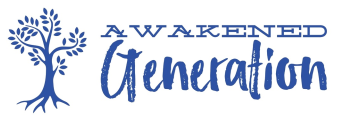Production Method: Collage Comic
The Collage Comic method uses characters and images clipped out of other printed material and re-purposes them to create new scenes. The process starts by finding potential images in collections of old publications or through image searches online (which are then printed out). Once images are collected, they are cut out and composed into scenes and glued into place.
Because this method requires numerous similar images to produce characters and background across a number of scenes, it can be a surprising amount of work to find all that material. It makes it easier if your comic is a “fan fiction” of a popular character and images are plentiful (for example, Thor from Marvel comics). However, if you’re producing something more original, and you’re willing to spend the time, the results can be very inspiring.
Example
Frank, teen librarian for the Nashville Public Library, demonstrates how to create a comic from characters, background, and dialog from three different sources:
A couple of important things to notice:
- Neatness counts: Although this method saves on having to create original art, it still requires skill to cut out elements for the collage and make them look good. The method depends on creating images that fit smoothly together without messy edges.
- You can create some elements. In the example, Frank used dialog in speech bubbles from other comics. In our quest, we’ll be creating our own dialog. This means an artist using this method will need to create their dialog on a printer and cut it out. You could potentially use this method for creating a variety of elements for a collage.
PROs and CONs
When consider whether or not to use this method, here are some important things to consider:
PROs
- Can produce vibrant images without drawing or painting.
- A great method when doing “fan fiction” — using popular characters that already exist.
- Can save time if materials are easily available.
CONs
- Finding materials can take considerable time depending on subject.
- Require extreme neatness in clipping images and composing them into scenes.
- Creativity is somewhat limited by source material.
Variations
- Digital collage: similar to the paper version, but images are found in digital sources or digitally photographed and clipping and composing is done in a graphics program.
- Hand-drawn with collage elements: popular comics and animation like The Amazing World of Gumball may use collage elements. In the case of Gumball, many sets in which the story takes place are real-world photographs. Also some characters and props are made out of photographed objects, puppets, and other things.



